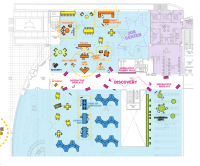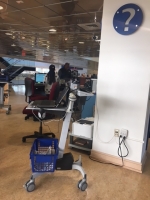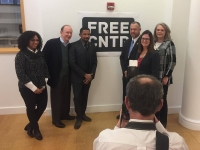HPL2020: A Model for Organizational Sustainability
Hartford Public Library, Conn.
Innovation Synopsis
HPL developed a new service and staffing model focusing resources on fewer full service branch locations which enabled HPL to expand hours and days of service, increase usage, expand partnerships and enhance programming while ensuring a financially and operationally stable organization.
Challenge/Opportunity
For many years, HPL struggled to maintain a consistent level of service across its 10 locations in the face of reduced public financial support; since 2006, hours and days of service consistently fell at all locations. A best-case scenario was level-funding over the next five years, although there was no guarantee as the city was seriously considering bankruptcy. The goal of the restructuring was to ensure long-term financial sustainability while delivering excellent services and enhancing programs city-wide.
Key Elements of Innovation
We developed a robust service ecosystem map which visually indicated what services were available in the city and helped determine where to focus library efforts. We trained all of our staff in service design principles and created an internal service design task force to create a new workflow and staff service plan, eliminating a large service desk and introducing roving service points. We consolidated services in seven locations; closing three.
Achieved Outcomes
We anticipated stable use, more consistent staffing schedules, enhanced hours/days of service and expanded programming. As of Q3 FY19 circulation, visits and programming attendance is up YOY even with fewer locations. New partnerships enabled creative redesign of a closed library with COLAB and the launch of Boundless@Rawson — an innovative school and library model. We expanded outreach service by introducing Community Collections and expanded mobile library services.



